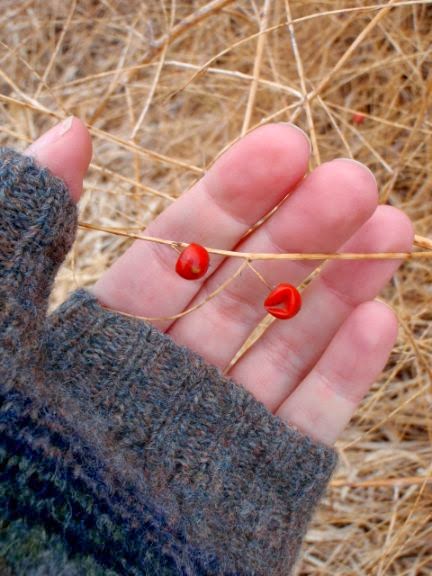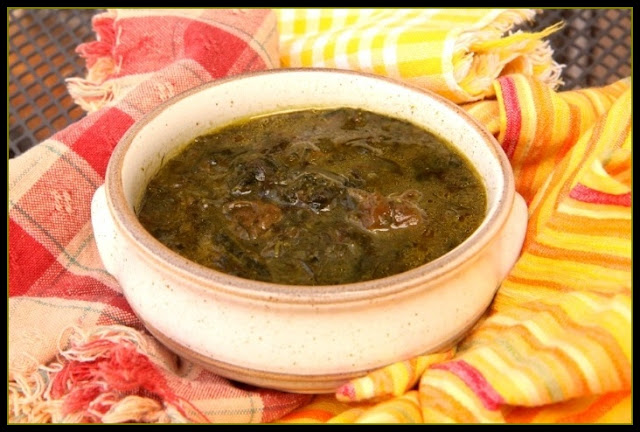Identifying Year-Old Wild Asparagus Plants - Your Key to Hitting the Asparagus Jackpot
Asparagus (Asparagus officinalis) season is just around the corner. The very best way to find the maximum amount of asparagus is to have all of your spots mapped out before the growing season begins. Once asparagus starts up, the surrounding plants are usually tall and green enough to make finding the new spears a true Where's Waldo experience, even when you know that you are looking right at them. This is why it helps to scout for asparagus in the off-season, locating old asparagus skeletons while they stand out against the winter landscape. If you do the legwork now, when those fat beauties start pushing out of the ground, you will know exactly where to return to find them.
For scale, I've tried to include my bag (13x13") or my hand in most every picture. I know you'll be tempted to mock my lame red circles and arrow, but I'm pretty sure Martha Stewart would declare them rustic.
-----------------------------------------------------------------------
Were you able to pic out the old asparagus plant from the lead picture? I've circled it here. The asparagus spears we cut and eat are the newly emerged plant. At maturity, asparagus looks quite different. Large clusters of it can take on a ferny and bush-like appearance. Of course, initially, the mature asparagus plant is green. As cold weather sets in, it turns a rather bright shade of orange-yellow. That color fades a bit with the elements, but even in springtime, old asparagus appears to have an orange-yellow cast.
------------------------------------------------------------------------
Asparagus loves fence lines. It also tends to grow along roads and ditches. If you find a spot of asparagus along one of these, it often pays to continue walking the length of it, and you find more. If you see asparagus growing next to a railroad, leave it be unless the tracks are long abandoned. Railroad companies spray for weeds on their property more than anyone I've seen. If you are on the edge of private property, be certain to ask permission to harvest asparagus. In general, people aren't terribly familiar with wild plants. But some are very well acquainted with asparagus, and if you pick it from their property, they'll be madder than a cat in a toilet bowl.
------------------------------------------------------------------------
As with all wild plants (A. officinalis is technically an escaped domestic plant, and therefor feral), there are plenty of exceptions to the rule. Notice this asparagus in the middle of a field. I have a hard time navigating to the patch in the above photo because it isn't next to any obvious marker.
-----------------------------------------------------------------------
Some old asparagus plants are knee high, others are as tall as a person, though both are likely bent over at this point in the year. The one in the above photo is leaning away from the camera, so you can't quite tell that it is nearly a foot taller than I am.
------------------------------------------------------------------------
One of the best ways to slam-dunk your wild asparagus identification is to locate the triangular leaf scales on the lower half of the plants. See how they look exactly as they do on fresh green asparagus?
------------------------------------------------------------------------
As asparagus matures, it unfurls long cylindrical leaf-like stems called cladodes. These are what give mature asparagus its classic fern-like appearance, similar to fennel tops. If you run your hand over asparagus at the height of summer, it feels soft. In old asparagus, most of these cladodes remain, and can help you tell the difference between it and similar-appearing plants (usually mustard plants around here). Don't get confused by the term, just know that there is nothing on an asparagus plant that you'd recognize as being like the leaf of a dandelion or the leaf of a tree.
------------------------------------------------------------------------
Even in late spring, old asparagus plants may still be clinging to bright red berries. If they're no longer red, then they can be white, grey, or grown. These berries can be a great help in identifying asparagus plants. Do not be tempted to eat these berries. They are toxic.
-----------------------------------------------------------------------
Once you get really good at identifying old asparagus, you can even begin to spot it from afar, like this patch way out in a farm field.
------------------------------------------------------------------------
OK, so you've got your asparagus patches mapped out. Now what? Keep checking them. At some point in the spring, when the warmth starts to take hold, the new spears will begin to nose out of the ground. Early on, you may need to push around the old plants bases and grasses to find the newly emerged asparagus. My rule is to let asparagus spears get as tall as possible as long as their tops are still tightly closed. Although, if I know a storm is coming or I won't get back to a patch in time to pick the asparagus at its peak, I will harvest the spears early.
------------------------------------------------------------------------
If all goes well, you will be able to harvest more fresh and tender wild asparagus than you can stand to eat. Ha! Who am I kidding? I can never get enough. Of course, once asparagus season is over, I don't eat it again all year long. It is a rite of spring. (Thanks to Wild Food Girl for being my hand model in this photo. Excellent hand job!)
-----------------------------------------------------------------------
If you don't manage to master finding asparagus in the off-season, you may not find it this year until it looks like this. I speak from many years of experience when I say that you will kick yourself if you find an overgrown patch like this, only a few weeks too late to harvest primo spears. It should be noted, though, that when you sense the season is drawing to a close that you should leave several spears to grow so that the plant can finish its life cycle. Forage responsibly, kids!
-----------------------------------------------------------------------
Further reading:
My original post on wild asparagus, still the most visited post on the blog Wild About Asparagus.
If you are looking for recipes for cooking your wild asparagus, click through to this Round Up.
Preparing asparagus: the facts about bracts, a very informative article by the Botanist in the Kitchen.
Wild Food Girl's Asparagus Legend Made Real. As you probably know, she is my real-life foraging bestie, and we've shared many happy asparagus-hunting trips together. This is still one of my favorite posts of hers.



















